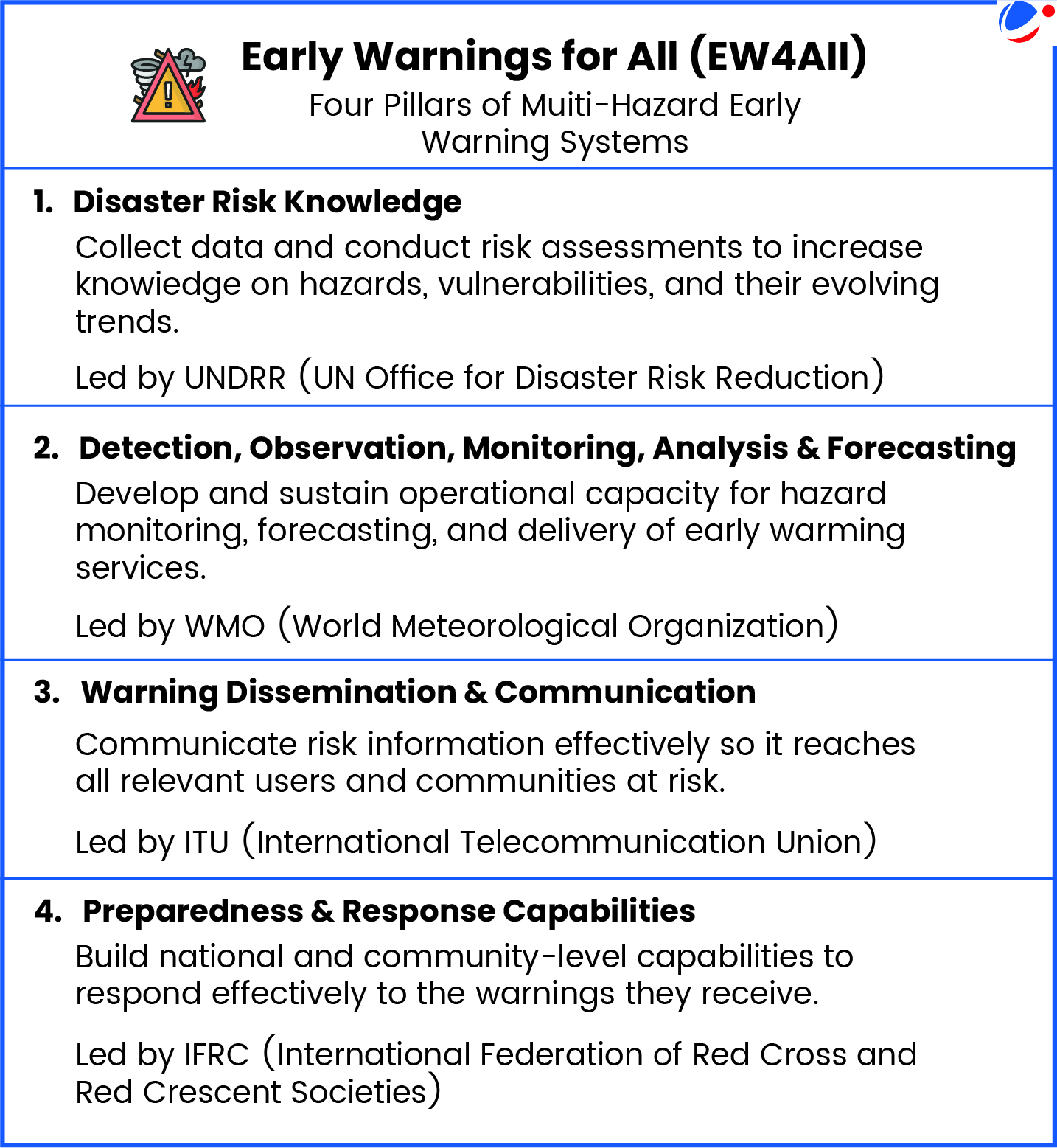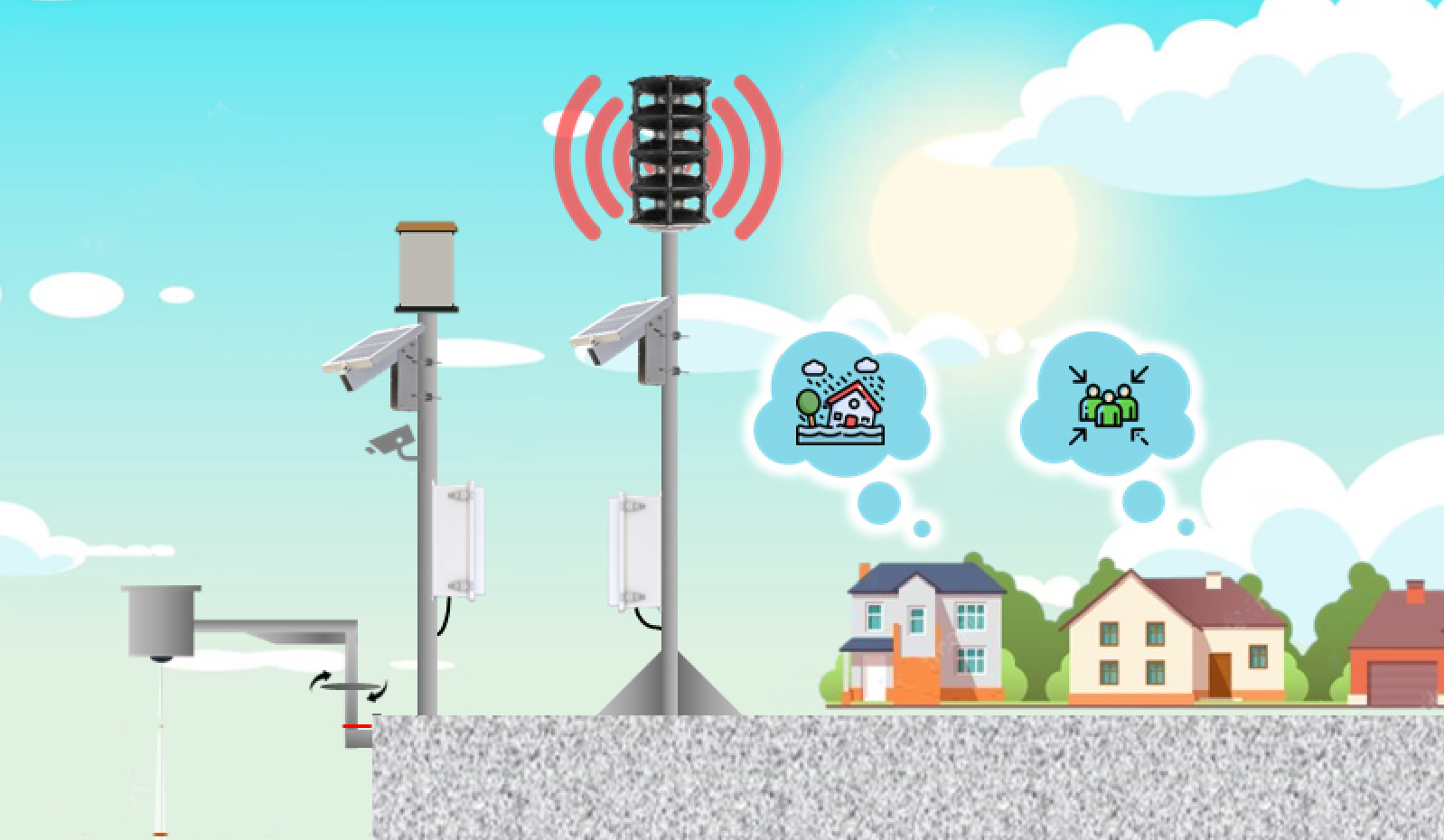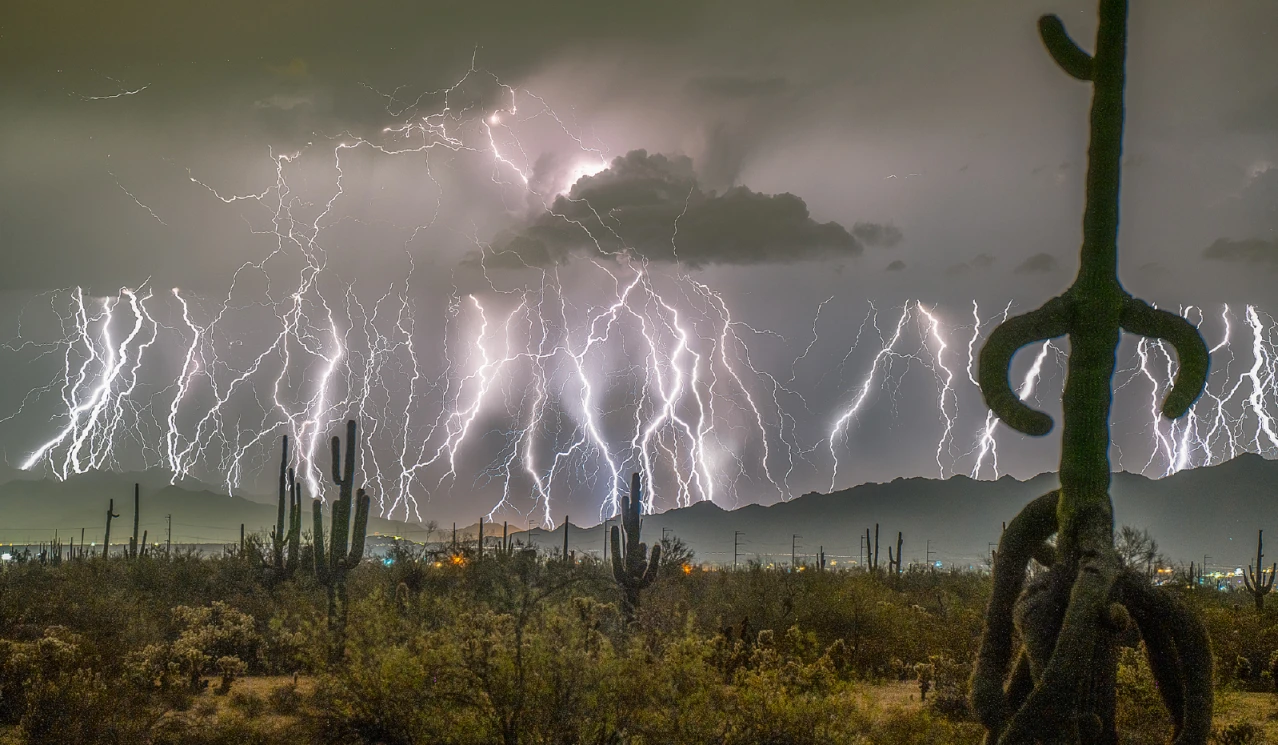At the Congress, WMO alsoreleased “Early Warnings for All in Focus: Hazard Monitoring and Forecasting” report, tracking progress in detection, monitoring, and forecasting capabilities.
- Report highlights gaps in basic forecasting capacity, low compliance with Global Basic Observation Network (GBON), and limited satellite data usage.

Early Warnings for All (EW4All) initiative
- Aim: Ensure universal protection from hazardous hydrometeorological, climatological and related environmental events through life-saving multi-hazard early warning systems by 2027.
- Launched: At COP27 of UNFCCC in 2022 by the UN Secretary-General.
- Organizations: It is jointly led by WMO, UNDRR, ITU and IFRC.
- Coverage: Initially focused on 30 high-risk countries, EW4All has since expanded to more than 100 participating nations.
About Early Warning System (EWS)
- EWS is an integrated system of hazard monitoring, forecasting, disaster risk assessment, communication and preparedness which aims at enabling early action to save and protect lives, livelihoods and assets of people at risk.
- Need for Early Warning:
- The damage caused by a disaster can be reduced by 30% if an early warning is issued within 24 hours.
- Disaster mortality is six times higher and the number of people affected is four times higher in countries with limited multi-hazard early warning systems.
- Economic damages from extreme weather events continue to surge, with over US$4 trillion in losses globally since 1970.






